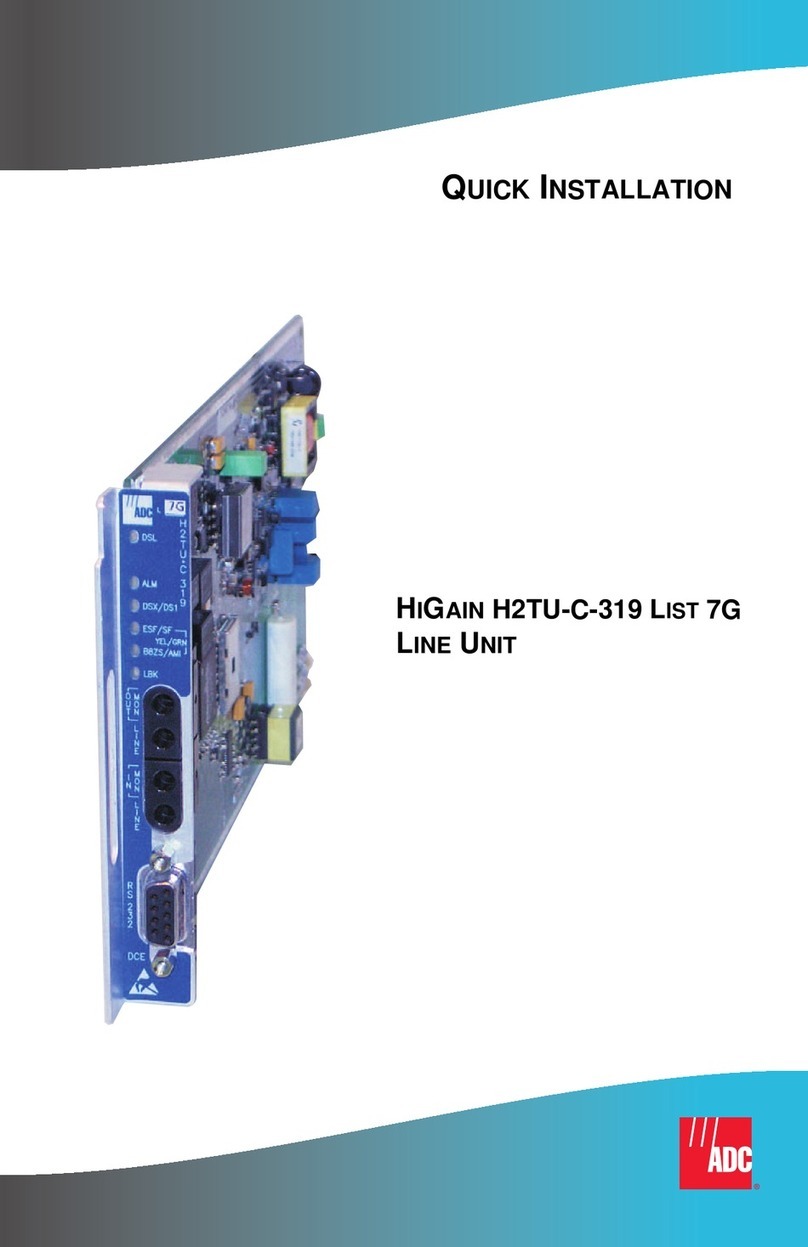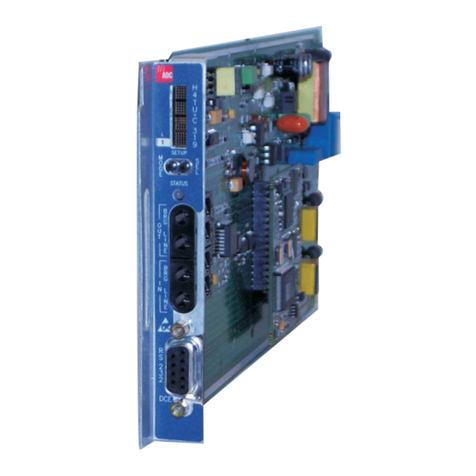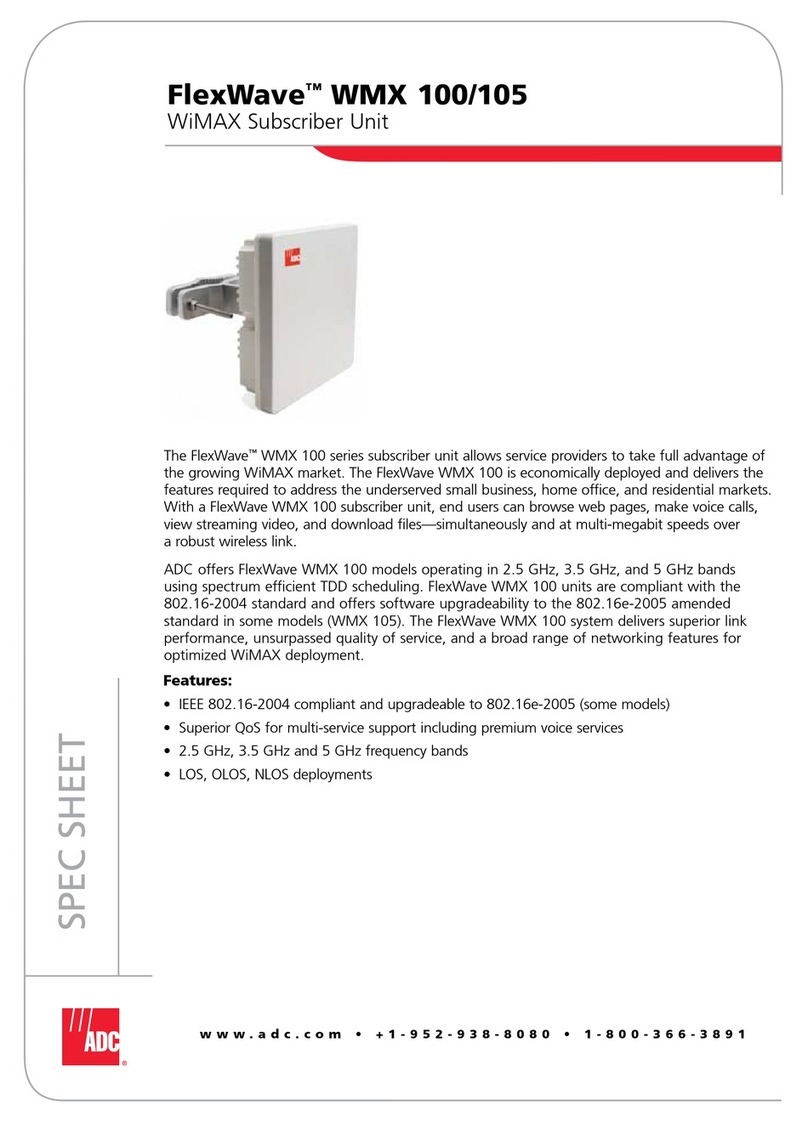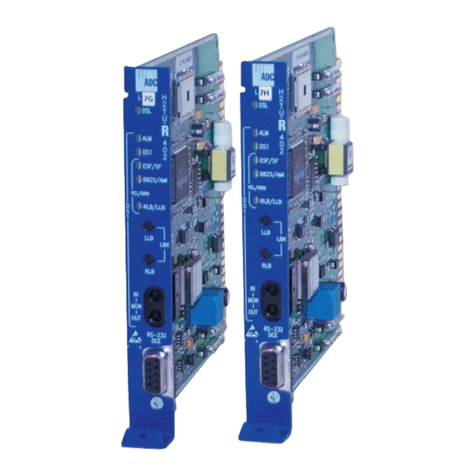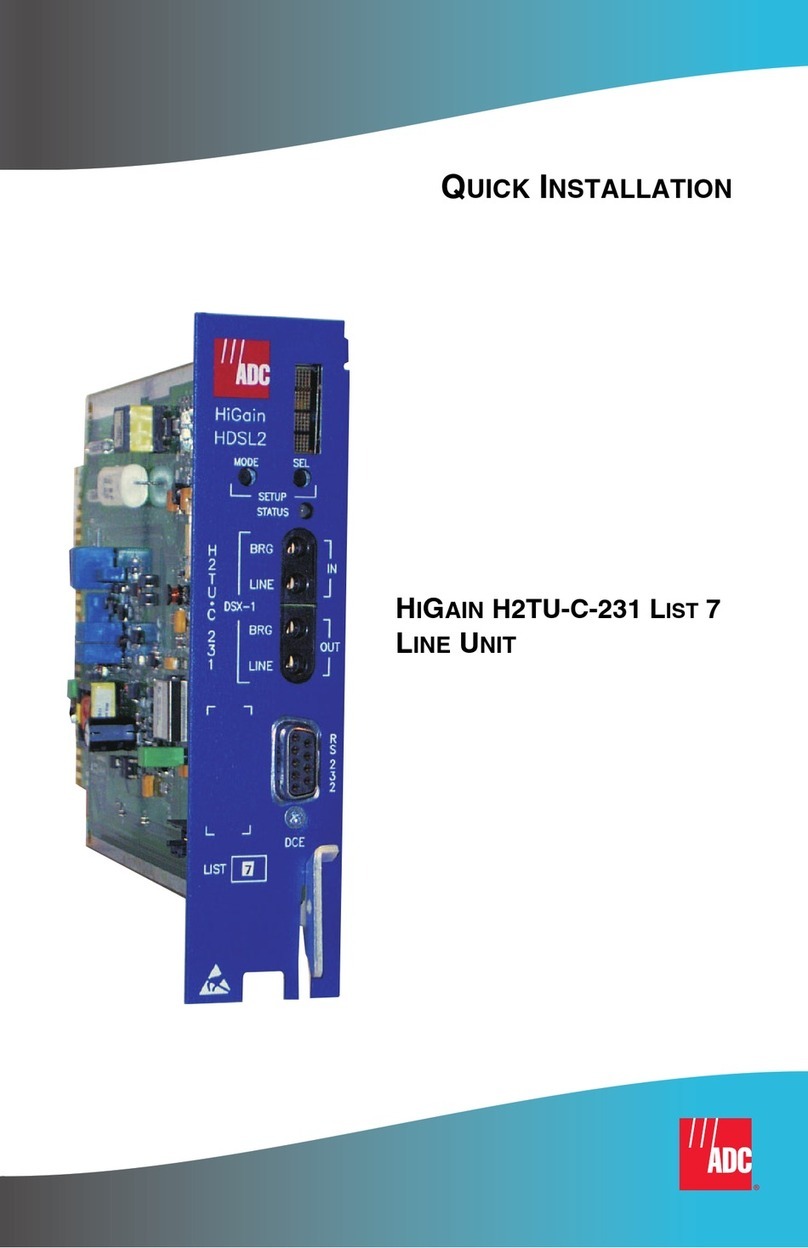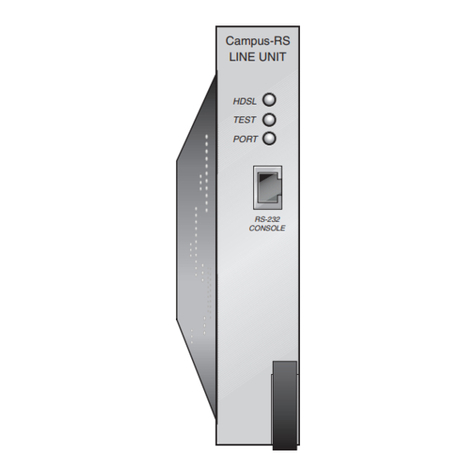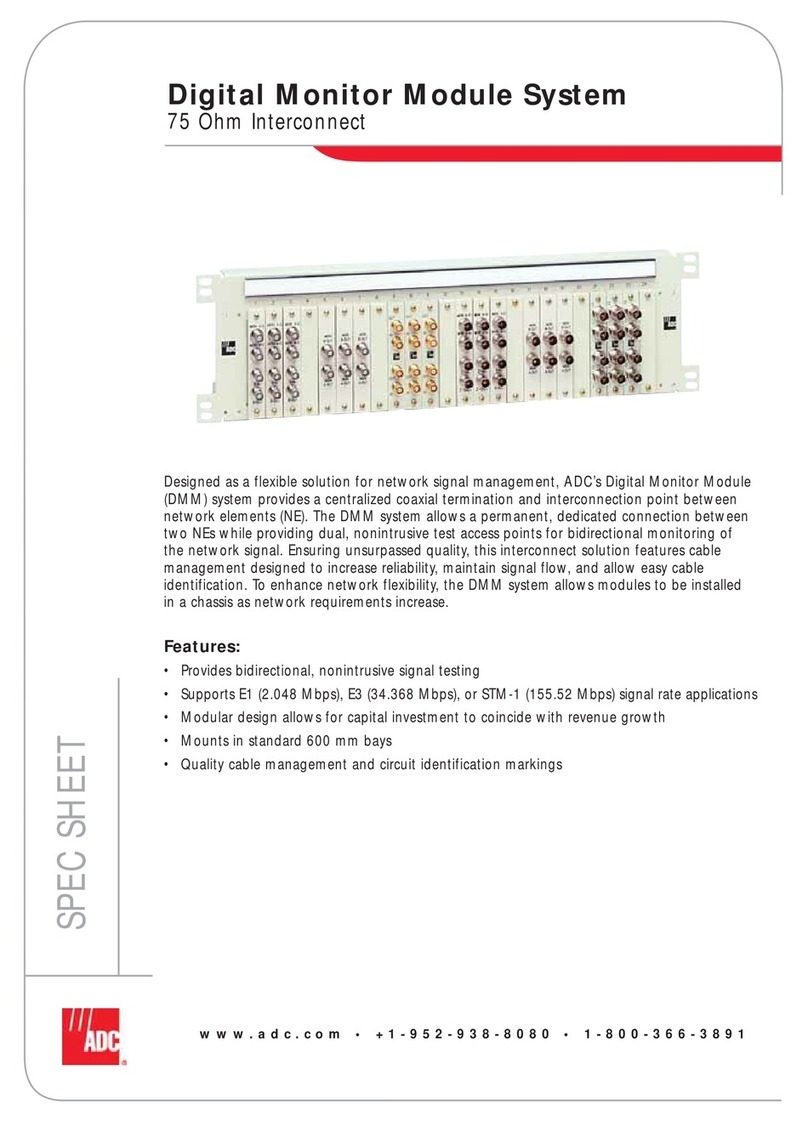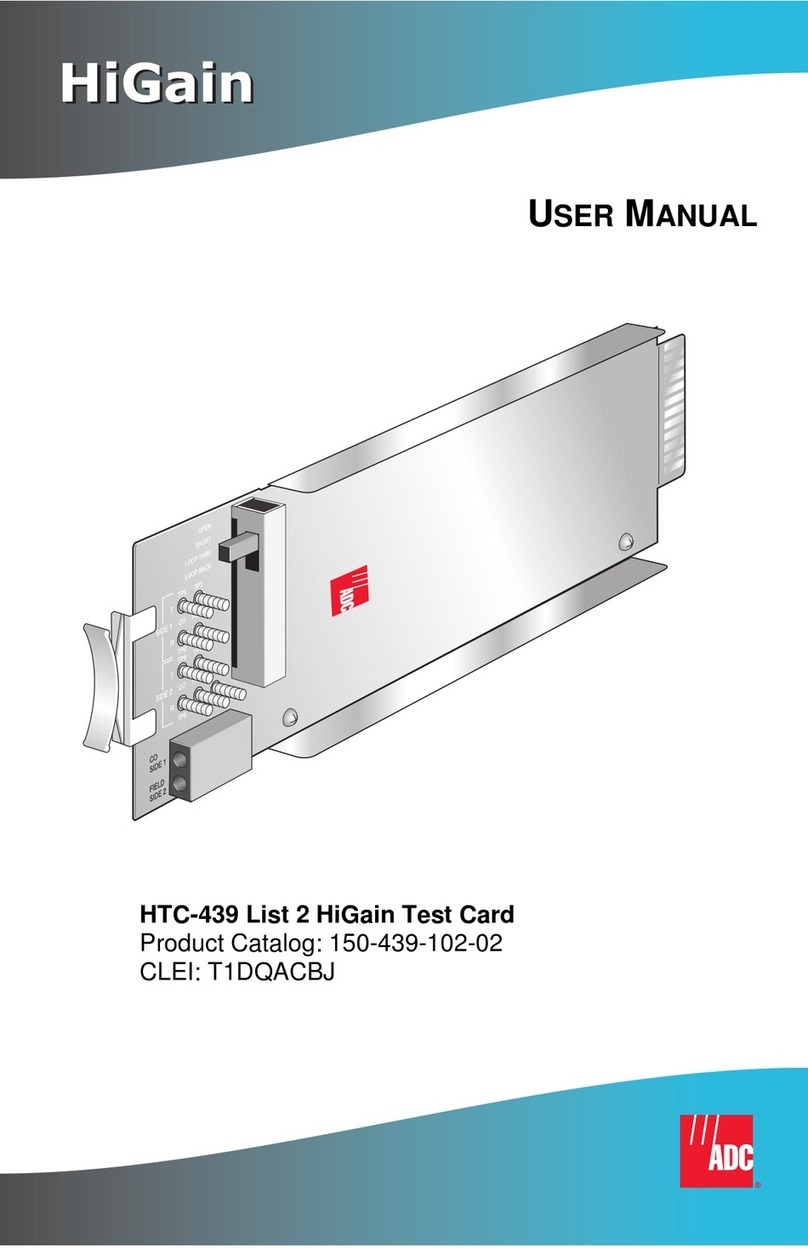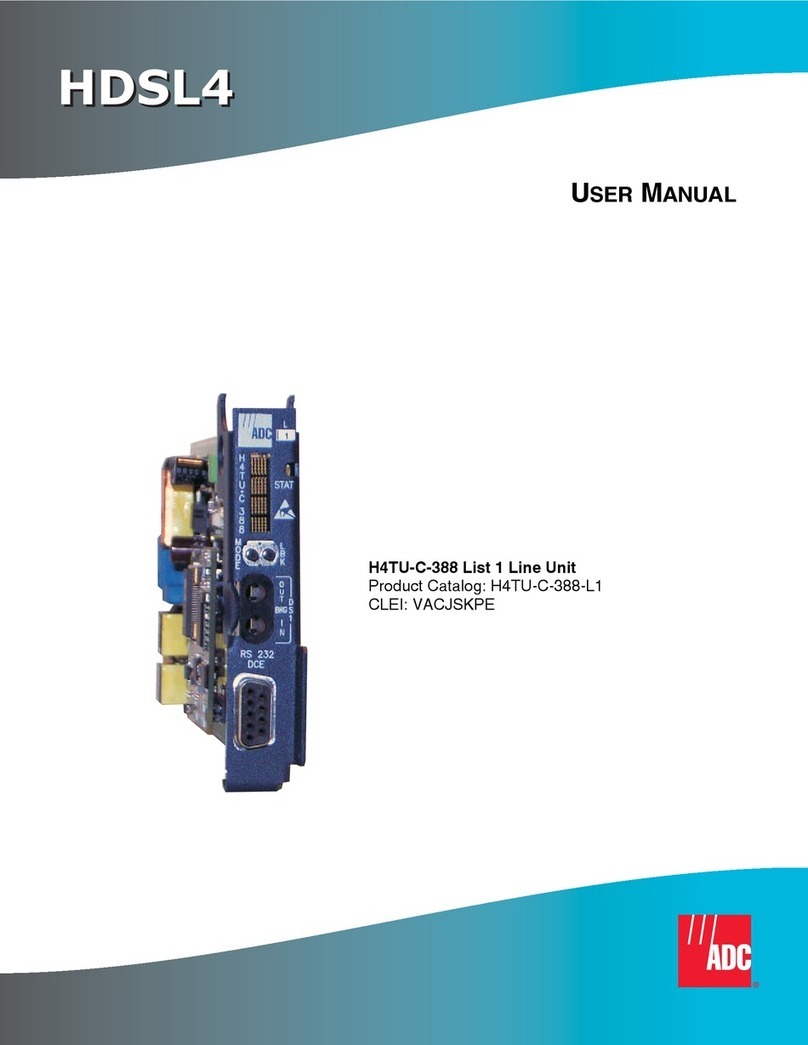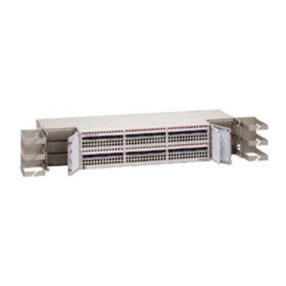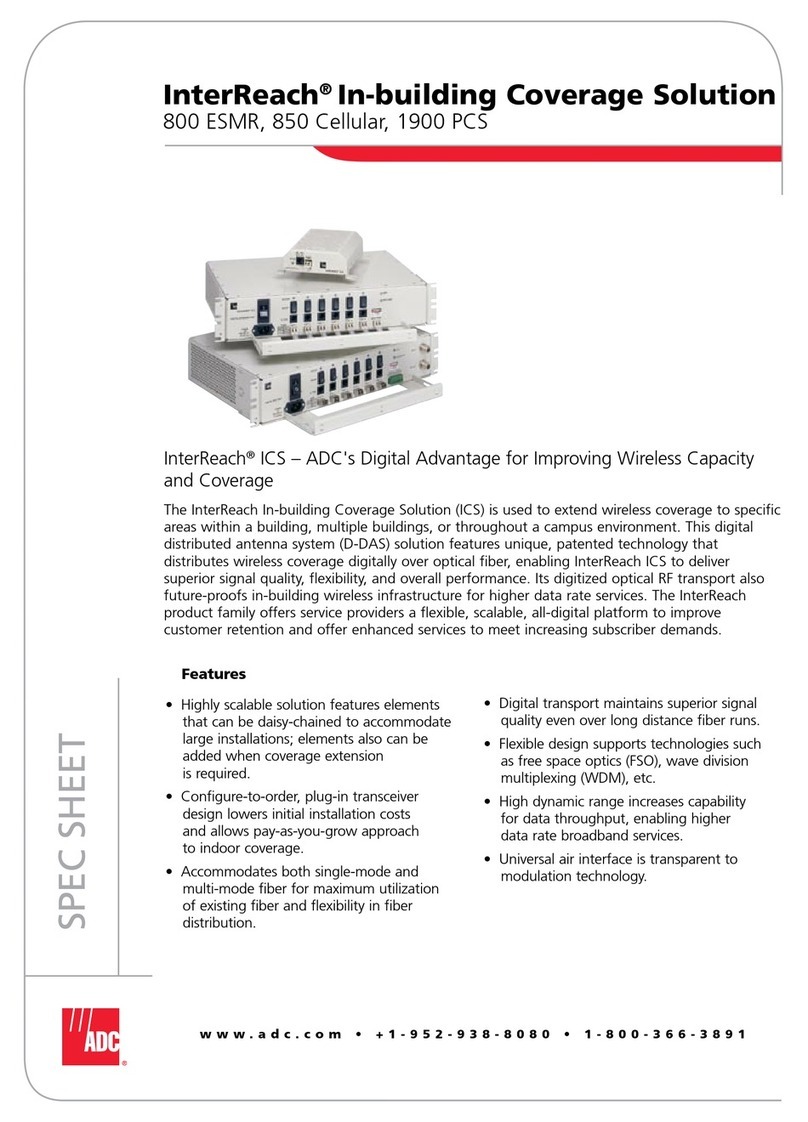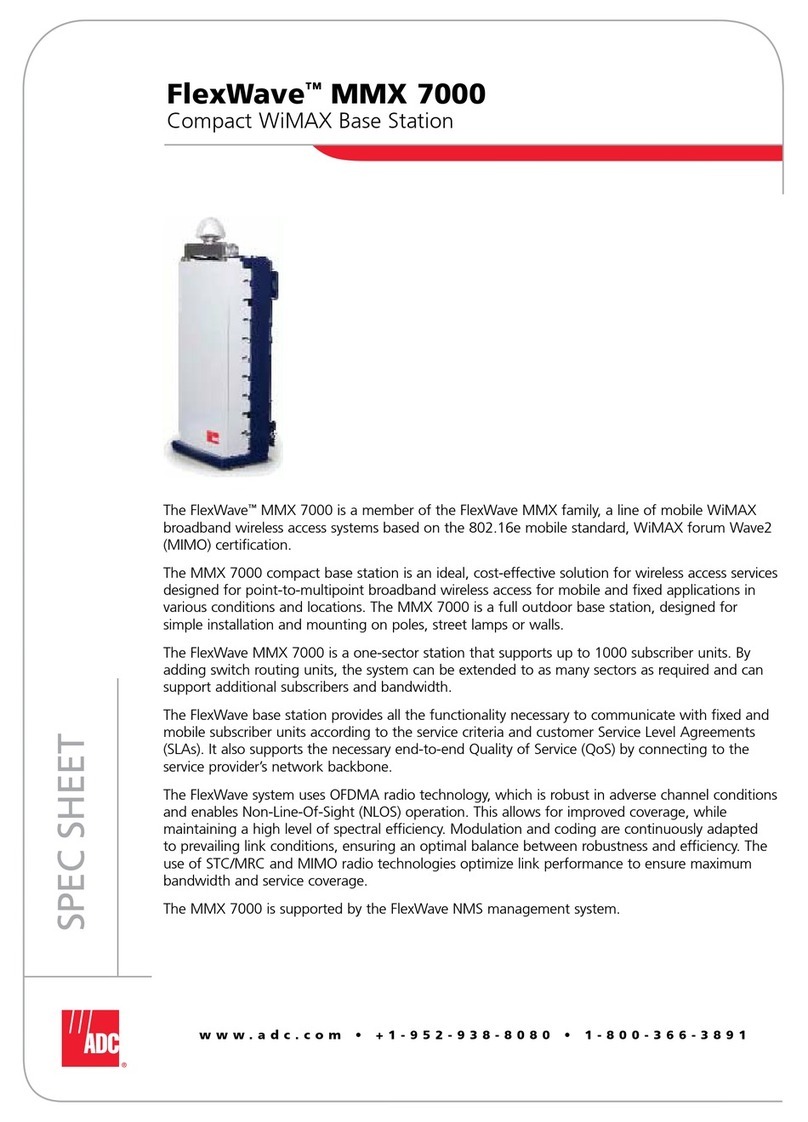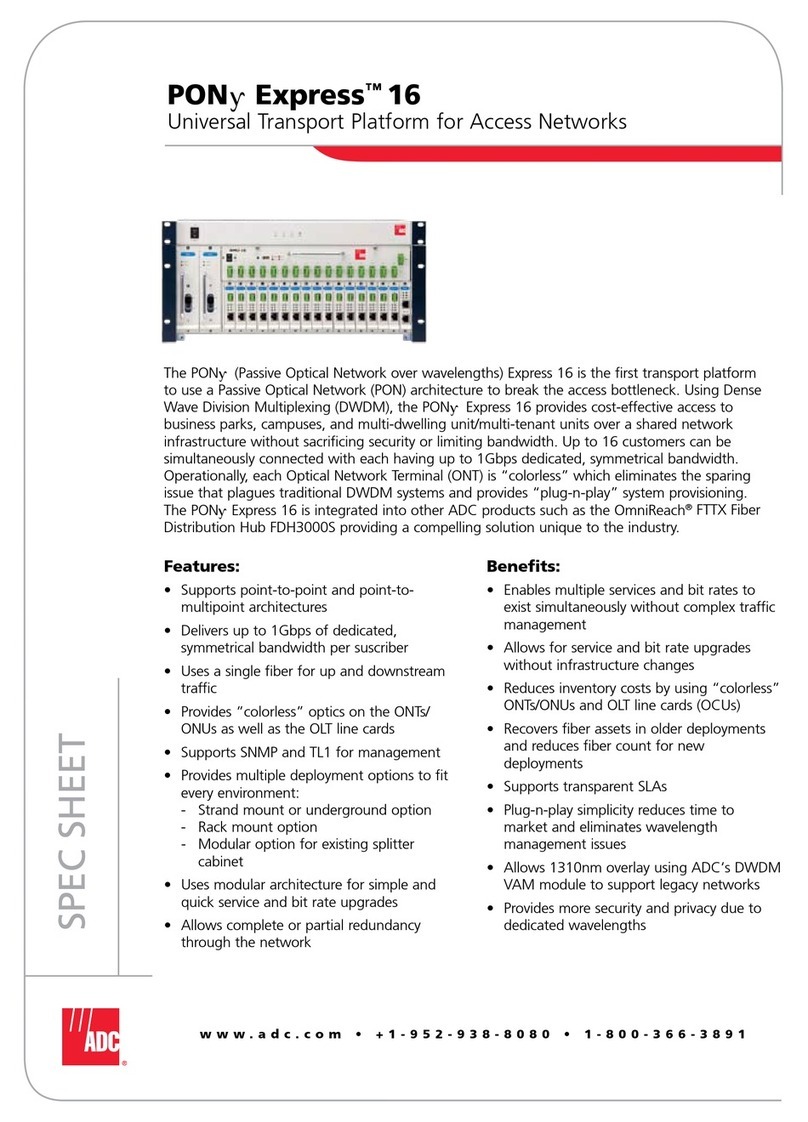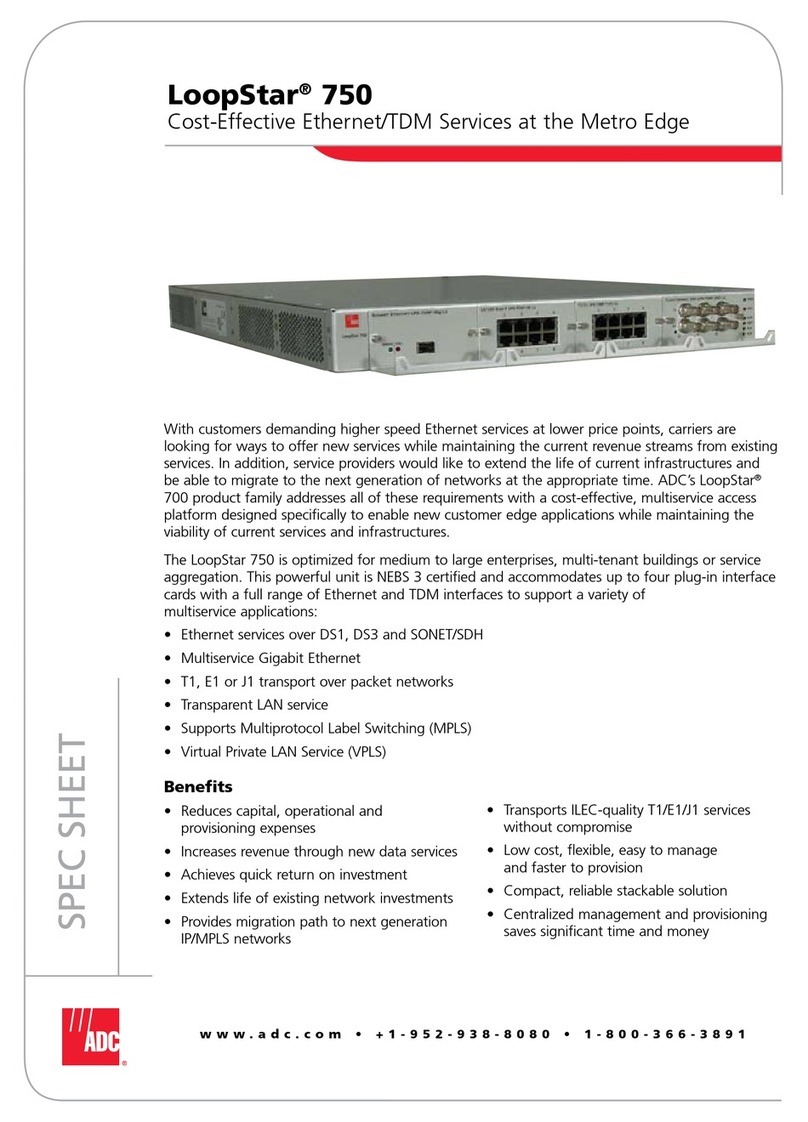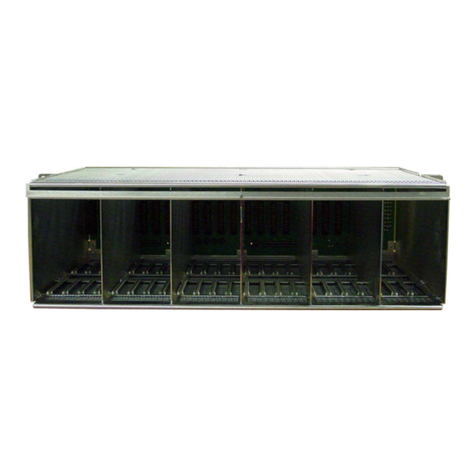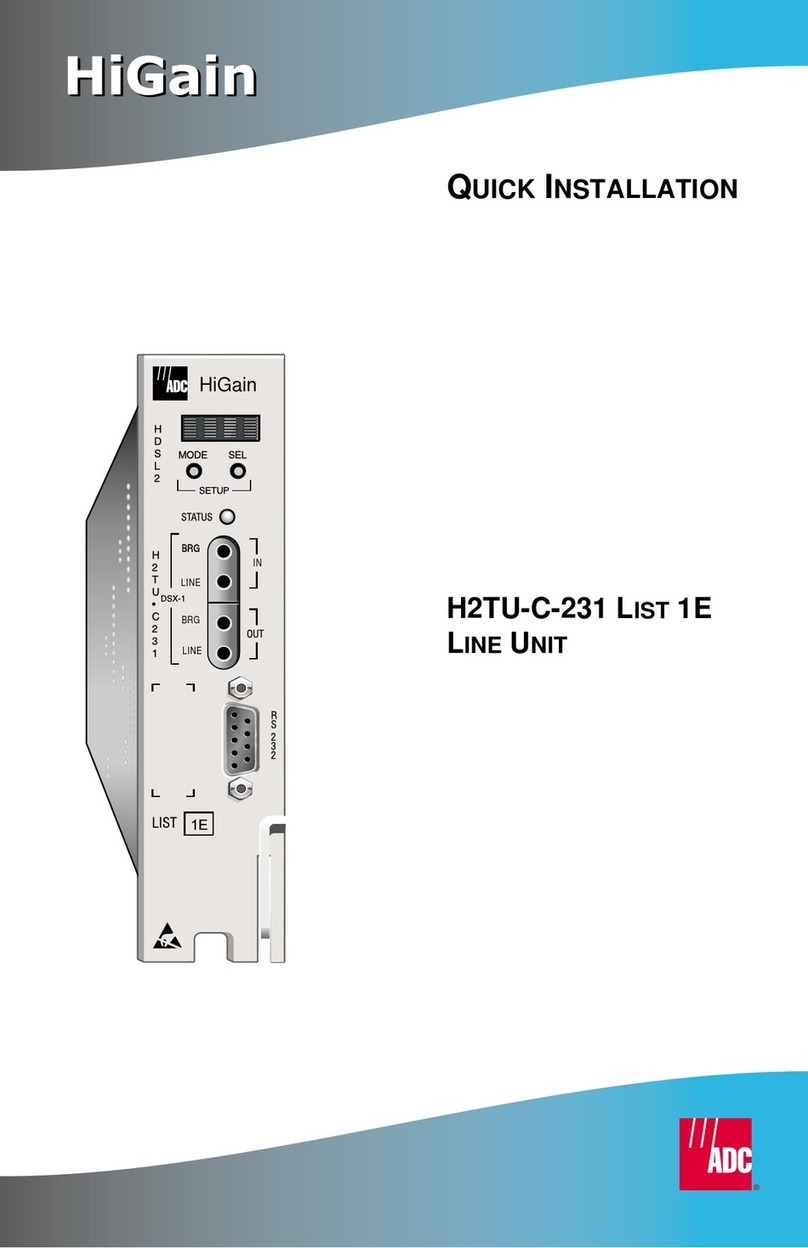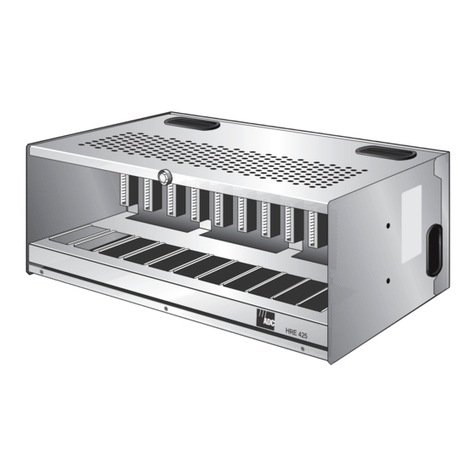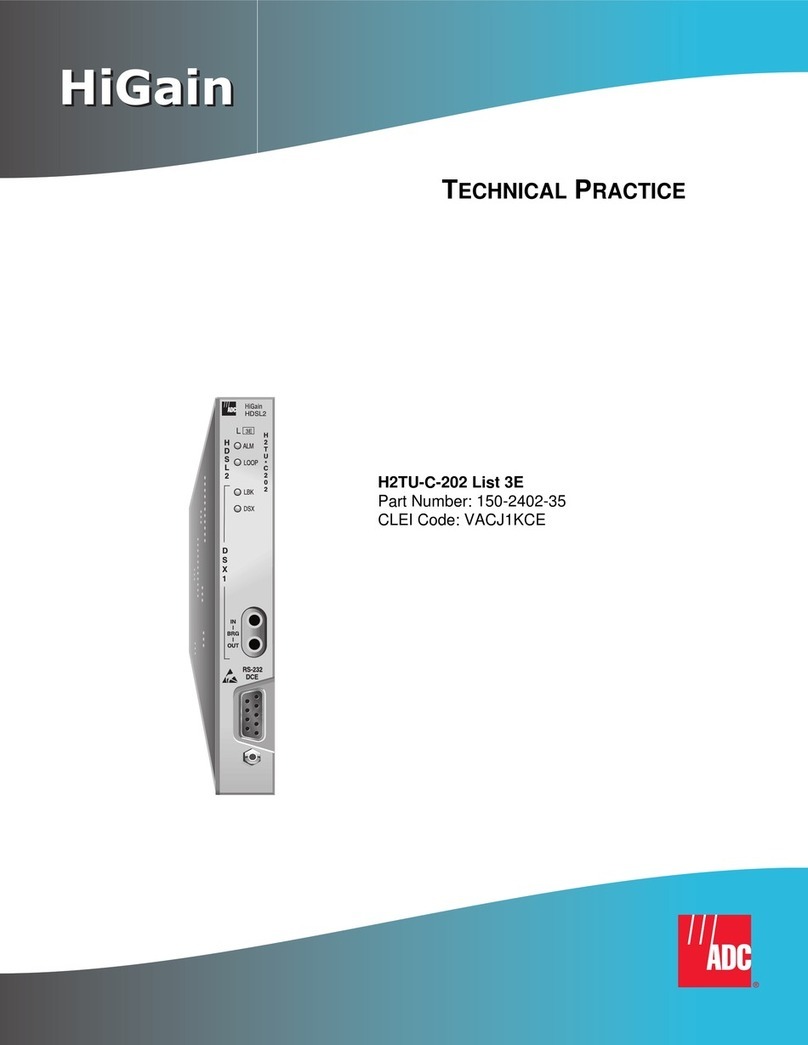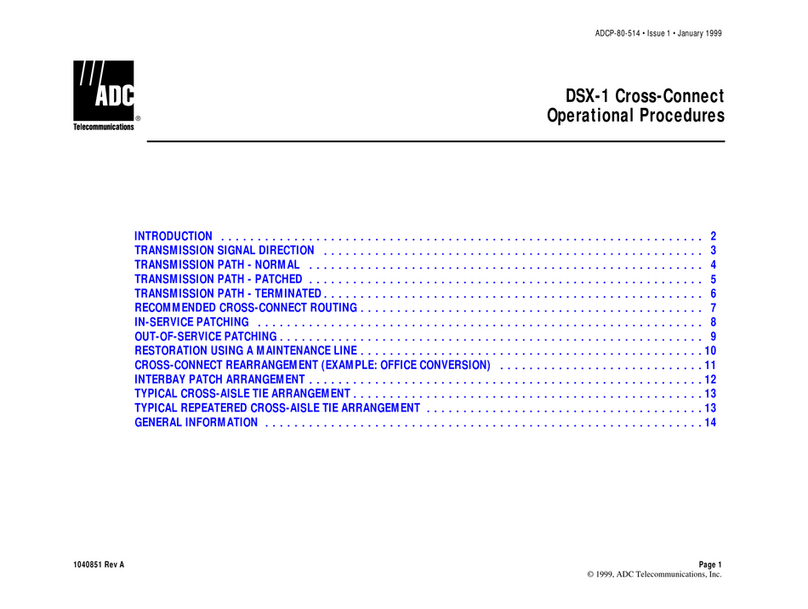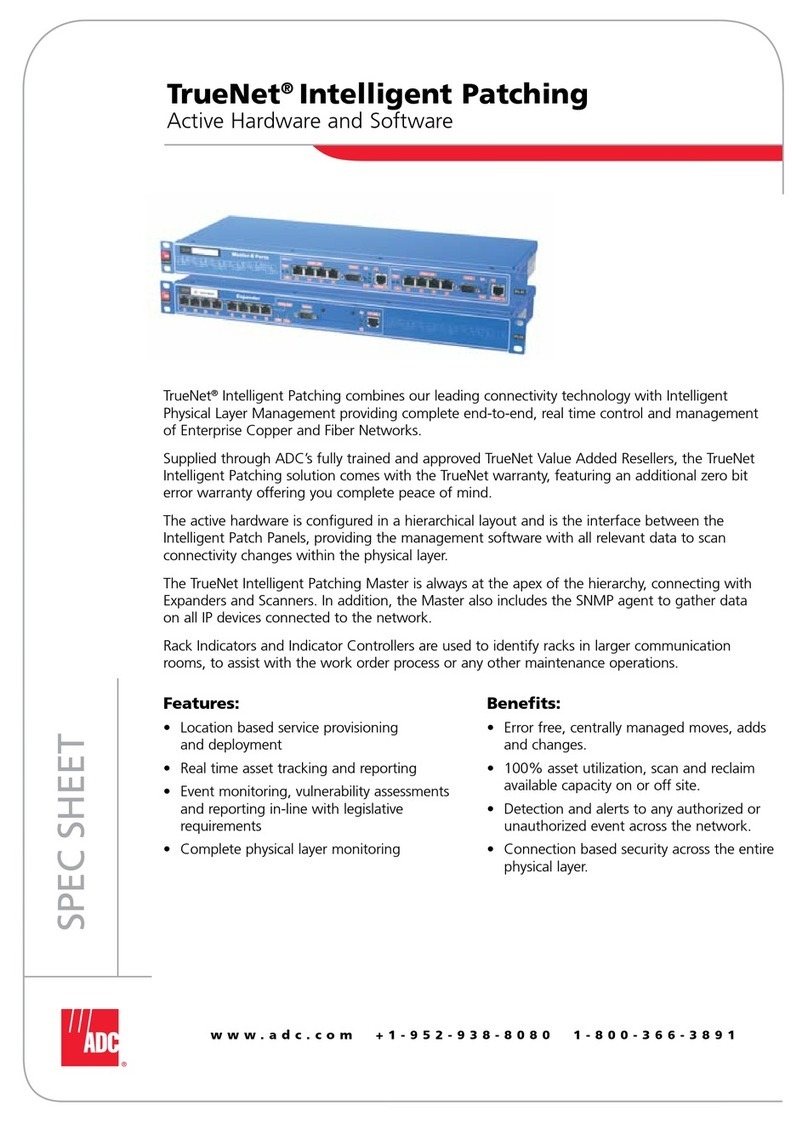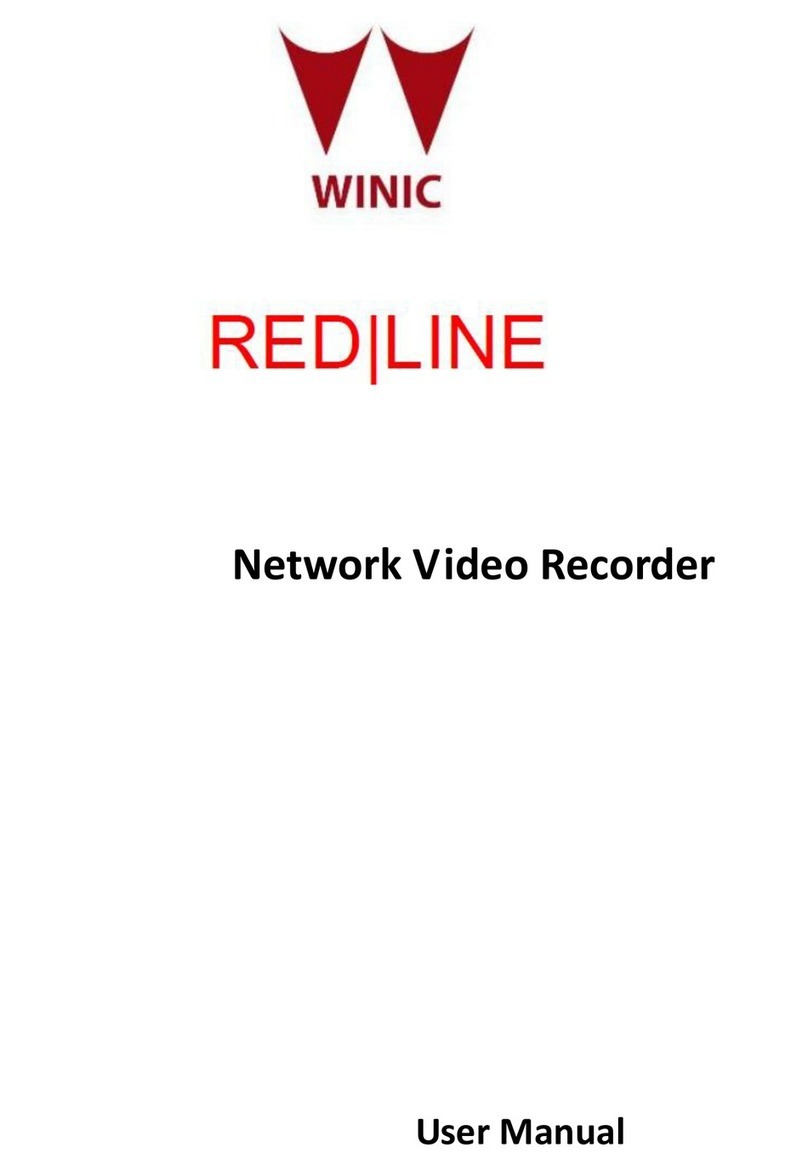
LOOPBACK TESTING
Initiate loopback testing from the HiGain HDSL2 maintenance terminal screen or use the
MODE and LBK buttons. The inband codes below (exceptions are COLB and RULB) can
also be sent by a test set.
For more information about the HiGain HDSL2 maintenance screens, refer to the H2TU-C-231 List
1F technical practice, document number 152-231-116-xx. Contact Customer Service to obtain a copy.
H
D
S
L
2
H
2
T
U
•
C
2
3
1
MODE LBK
RCV
BRG
XMT
L
LINE
LINE
BRG
R
S
2
3
2
STATUS
Four-character display
List number
Status LED
Displays status, provisioning, and
alarm messages. See tables below
for a list of message descriptions.
Status LED reports the following conditions:
Card-edge connector
14
15
16
17
18
19
20
21
22
23
24
25
Tip
DSX-1
DSX-1
IN
OUT
Ground
Factoryuseonly
Ring
Ground
Tip1
Ring1
39
40
41
42
43
44
45
46
47
48
49
50
-48Vdc
1
2
3
4
5
6
7
8
9
10
11
Fusealarm*
Tip
Ring
KEY KEY
26
27
28
29
30
31
32
33
34
35
36
37
38
12
13
Alarms**
* Fuse alarm is normally floating and at -48 Vdc when activated.
** System minor alarm contacts (pins 20 and 21) are normally open, and close upon alarm.
Management bus
1F
A Customer Remote (CREM)
or Network Local (NLOC)
loopback is in effect.
Green LED Normal operation.
Red LED Fuse alarm.
Flashing Red LED HDSL2 acquisition or
system alarm.
Yellow LED
FlashingYellow LED System is in Armed (ARM)
mode.
Off Line power is off.
System option buttons
DSX-1 test access jacks
Use the MODE and LBK buttons to review all system
parameters, including user-configured settings, and to
activate loopbacks.
Press the MODE button
for at least 3 seconds to place the front-panel display in
scroll mode.When it has finished scrolling through all the
system parameters, the display returns to its normal mode.
To display system parameters:
To initiate a manual loopback:
Connect standard test equipment.
Craft port provisioning
To access all system maintenance, provisioning,
and performance screens, connect a standard
9-pin terminal cable between the serial port on a PC
and the H2TU-C craft port.
BRG
LINE
Provides non-intrusive bridging jack
access to (XMT) and from (RCV) the
HDSL2 span at the DSX-1 interface.
Allows monitoring of the DS1 payloads.
Provides splitting jack access to
(XMT) and from (RCV) the HDSL2 span
at the DSX-1 interface.
MaintenanceTerminal Modem Settings
9600 baud
8 data bits
No parity
1 stop bit
Hardware flow control:OFF
Terminal emulation software:VT100
HDSL2 Span
1
2
To manually terminate a loopback:
Press both the MODE and LBK buttons for at least 5
seconds.The following message appears:
Press LBK to activate the NLOC loopback or press
MODE to advance to the next loopback selection.
Press both
MODE and LBK for 3 or more seconds.
MAN LPBK NLO?
HiGain
HDSL2
GNLB Loopback Commands
Loopback Inband Code Description
NLOC 1111000 DSX-1 signal is looped back to the network at the H2TU-C.
NREM 1110000 DSX-1 signal is looped back to the network at the H2TU-R.
COLB (a)
(a) Dual loopbacks are only initiated from the MODE and LBK buttons.
DSX-1 signal is looped back to the network at the H2TU-C and signal from the
customer is looped back to the customer at the H2TU-C.
RULB(a) DSX-1 signal is looped back to the network at the H2TU-R and signal from the
customer is looped back to the customer at the H2TU-R.
CREM 1111110 DS1 signal from customer is looped back to the customer at the H2TU-C.
CLOC 1111100 DS1 signal from customer is looped back to the customer at the H2TU-R.
SMJK 11000 DSX-1 signal is looped back to the network at the H2TU-R SmartJack module.
Loopdown 11100 Deactivates any of the above loopbacks.
Front-Panel Alarm Messages(a)
(a) Front-panel alarm messages are listed in order of priority. ALRM displays prior to any alarm message.
Pressing the LBK button initiates an Alarm Cutoff (ACO) message.
Message Description
PWR FEED SHRT (b)
(b) Message displays repeatedly as long as the alarm condition exists and is not included in the priority order.
A short between the Tip and Ring of the HDSL2 pair.
PWR FEED GND (b) The HDSL2 loop is grounded.
PWR FEED OPEN (b) A line power open condition.
SPNn-LOSW The HDSL2 loop has lost synchronization. The span closest to the network has
highest priority.
LLOS No signal is detected at the DSX-1 input to the H2TU-C.
RLOS No signal is detected at the DS1 input to the H2TU-R.
LAIS (c)
(c) Does not activate the alarm relay access pins 20 and 21.
Local Alarm Indication Signal.
RAIS (c) Remote Alarm Indication Signal.
TRCI (c) An RAI alarm (yellow LED) from the CPE with an error-free signal from the line unit
or network.
RRAI(c) An RAI alarm (yellow LED) from the Customer Premises Equipment (CPE) with errors
from the line unit or network.
xxx-DBER (c) A system DS1 Bit Error Rate (BER) alarm. (xxx denotes either TUC or TUR.)
PRMF (c) H2TU-R Performance Report Messaging BER threshold exceeded at far end.
PRMN (c) H2TU-R Performance Report Messaging BER threshold exceeded at near end.
xxx-HBER A system HDSL2 Block Error Rate (BER) alarm. (xxx denotes either TUC or TUR.)
xxx-MAL The margin on the HDSL2 loop has dropped below the threshold setting.
(xxx denotes either TUC or TUR.)
xxx-LA The attenuation on the HDSL2 loop has exceeded the maximum threshold value.
(xxx denotes either TUC or TUR.)
To comply with the intrabuilding wiring requirements of
GR-1089 CORE, Section 4.5.9, the shields of the ABAM-type
cables that connect the H2TU-C-231 List 1F DSX-1 output ports
to the cross-connect panel must be grounded at both ends.
Network
Customer
Premises
H2TU-C H2TU-R
TLOS*
NLOC CREM CLOC
1111000 NREM
1110000 1111100
1111110
11000
SMJK
When enabled,TLOS is an automatic loopback
that occurs with an LOS at the remote DS1 input.
*
DS1
Front-Panel Diagnostic Messages
Message Description (normal operating messages in bold)
A=xx The loop attenuation of the longest (maximum loss) span, measured in dB.
ACQ The multiplexers of the H2TU-C-231 and H2TU-R are trying to establish synchronization.
AnL The multiplexers of the two devices on Span n are trying to establish synchronization with
each other, where nis the number of the span.
ARM Armed to respond to Intelligent Repeater Loop (ILR) codes.
BAD RT? The H2TU-C is not receiving a response from the H2TU-R.
FERR A framing bit error occurred at H2TU-C DSX-1 input.
FLDL Flash download of firmware updates. (Contact Customer Service for update procedcures.)
HES H2TU-C HDSL2 loop cyclical redundancy check (CRC) error.
LBPV A local bipolar violation has been received at the DSX-1 input to the H2TU-C.
M=xx Indicates the power of the received HDSL2 signal relative to noise (S/N with respect to 21.5 dB).
Any value of 6 dB or greater is adequate for reliable system operation.
MNGD The H2TU-C is under control of the HMU-319 network management unit.
PWR FEED OFF HDSL2 span power is turned off.
PWR FEED ON Indicates that the HDSL2 loop is not grounded or shorted.
SIG The transceivers of the H2TU-C and H2TU-R (or the H2TU-C and first regenerator) are
trying to establish contact with each other on Span 1 of the HDSL2 loop.
SnL The transceivers of the two devices on Span nare trying to establish contact with each
other, where nis the number of the span.
Front-Panel Read-Only Settings Using MODE (a)
(a) Front-panel codes scroll in the order listed. The configured selections follow each code.
Message Description (default values in bold)
VER x.xx Software version number x.xx.
LIST xx List number of the H2TU-C-231.
FRM xxxx Frame (SF, ESF, UNFR).
CODE xxxx Line code setting (AMI or B8ZS).
LATT xx Loop Attenuation threshold setting (38).
MARG xx Margin threshold setting(4).
EQL Sets the DSX-1 Equalizer to: EXT (replaces internal equalizer with external equalizer), 0 (0 to 132
ft.), 133 (133 to 265 ft.), 266 (266 to 398 ft.), 399 (399 to 532 ft.), 533 (533 to 655 ft.).
RLBO Sets the H2TU-R line buildout to 0.0 dB, -7.5 dB, or -15 dB.
LPBK Enables (ENA) or disables (DIS) SmartJack loopback commands.
SPLB xxxx Configures system for generic (GNLB) or special inband loopback commands (A1LB, A2LB, A3LB, A4LB,
A5LB).
PWRF OFF = disables HDSL2 powering; ON = HDSL2 line voltage is -185 Vdc maximum.
HBER 1E-6 or 1E-7 = alarm activates when the HDSL2 BER alarm threshold exceeds 10-6 or 10-7. NONE
= prevents generation of a system alarm due to BER.
DBER Enables (ENA) or disables (DIS) fixed 24-hour DSX-1 BER alarm threshold.
LBTO Loopback timeout = NONE, 20, 60, 120 minutes.
ALM Enables (ENA) or disables (DIS) alarm indications on pins 20 and 21.
DS1 DSX-1 line code = Bipolar with 8-Zero Substitution (B8ZS), Alternate Mark Inversion (AMI).
CONV H2TU-R frame format conversion = OFF (framing determined by the DS1 FRMG option), ACON
(autodetection of framing and potential frame conversion at the H2TU-R), or FCON
(autodetection of framing and forced frame format conversion at the H2TU-R).
FRMG DS1 frame formatting = AUTO (auto framing mode) or UNFR (unframed mode),
RDA Enables (ENA) or disables (DIS) alarm indications due to remote DS1 LOS at H2TU-R input.
ALMP Enables system to output an alarm pattern: Alarm Indication Signal (AIS) or Loss of Signal (LOS).
BPVT Enables (ENA) or disables (DIS) Bipolar Violation Transparency (BPVT).
NLBP Enables the H2TU-R to transmit either AIS or LOS towards CI for any network loopback.
TLOS Enables (ENA) or disables (DIS) a logic loopback at the H2TU-R when an LOS occurs at its DS1 input.
PRM OFF = no enhanced Performance Report Messaging; SPRM = Supplemental PRM;
NPRM = Network PRM; AUTO.
NAIS If ALMP is set to AIS, this option specifies which pattern is sent to the network when a remote
LOS or AIS occurs. CI = AIS-CI sent to the network; AIS = AIS sent to the network.
ROVR Enables (ENA) or disables (DIS) conversion of an ESF DS1 payload from the network with an
embedded RAI pattern to an SF-RAI pattern towards the CI at the H2TU-R. CONV option must
be set to FCON or ACON.
RACI Enables (ENA) or disables (DIS) conversion of a DS1 RAI alarm (yellow LED) signal received by
the H2TU-R to be converted to an RAI-CI signal towards the network.
PBON Configures the power output levels of the H2TU-C network unit toward the customer to comply
with Default (DEF) or Enhanced (ENH) templates.
PBOC Configures the power output levels of the H2TU-C customer unit toward the network to comply
with Default (DEF) or Enhanced (ENH) templates.
